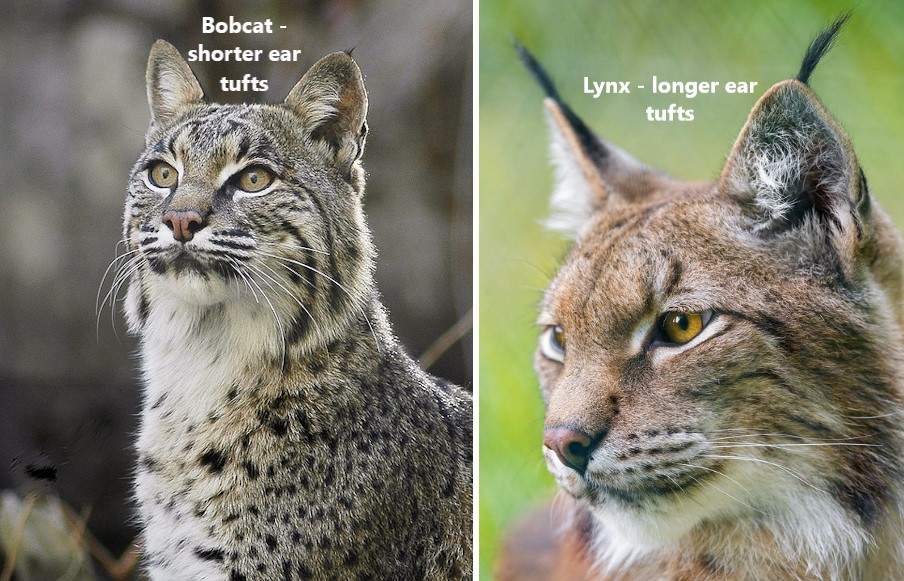There are 2 key differences in appearance between the bobcat and the lynx. There are more of course but if a person is trying to identify a bobcat or a lynx and differentiate between them you need some clearly identifiable signs and I think one in the rear and one in the front do the trick. In the comparison images I am using the Canada lynx.
Ear tufts
The length of the ear tufts is one of the key appearance differences. The picture shows a nice comparison. There is no mistaking the difference. I think it would be noticeable from a reasonable distance too as long lynx tipped ears are very visible.

The bobcat lynx tips are fairly normal and somewhat like those of the domestic cat. The cat fancy phrase ‘lynx tipped’ or ‘lynx tips’ clearly tells us that the lynx has long ear tufts. The Maine Coon has lynx tips reminiscent of those of the lynx.
Here is another strong image showing the strong and outstanding ear tufts of the lynx.

Tail tip colour and pattern
The lynx has a solid black tail tip while the bobcat’s tail is black on the top surface and white on the bottom surface as per the photo below.

Feet
I need to mention the difference in feet size! Bobcats have smaller feet than the lynx and they lack the lynx’s hairy foot pads. Lynx are better adapted for travelling in deep, soft snow. This difference also points to the fact that the Canada lynx is distributed further north into Canada compared to the bobcat. Essentially the Canada lynx is found in Canada and the bobcat in America with a small overlap.
Similarities
The bobcat and Canada lynx are similar in appearance. The Eurasian lynx is the largest of the bobtailed cats and can weigh around 38 kilograms. An adult male in Romania weighed 48 kg. The Canada lynx weighs about 11 kilograms. Bobcat weights vary a lot. In N. Minnesota the average winter male weighs around 13 kg and females 9 kg.
The similarities between Canada lynx and bobcat are in their short tails, tufted ears (but a big difference in tuft length), relatively small heads and long, strong legs.
Below are some more pages on the bobcat.

